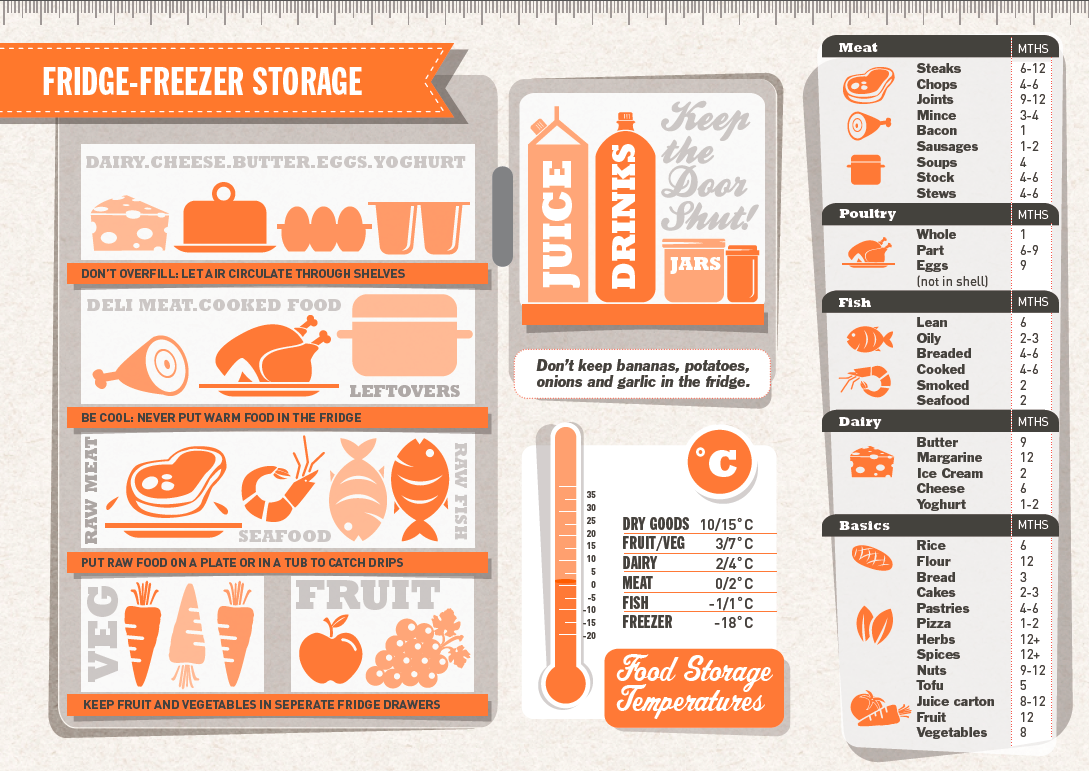Your humble refrigerator is the most ignored and frequently abused item in the house. Cramped, over-stuffed, and haphazardly stacked, with ugly spills, deposits and odours – is routine in most refrigerators. If not taken care of, things in there can get pretty messy, putting your family’s health at risk. Here’s how to keep it clean in a hassle-free way
Some Dos For Maintainence
Avoid cramming the fridge beyond capacity. It will be less efficient and give off bad odour; food also spoils easily. Use rectangular, flat containers to store food – not the round kinds as they tend to occupy more space.
Store veggies in perforated plastic or net bags to allow air circulation and keep them fresh. Wrap leafy veggies such as spinach and lettuce in a newspaper to retain freshness. Place the vegetables and fruits in separate stands, as ethyl gas emitted by fruits can cause your veggies to turn yellow. Check thoroughly for unusual smells in the fridge.
Throw away rotten veggies or those that have developed anything furry or green on the surface. Check for packaged products such as jam, bread spread and cheese, which are past their expiry dates. To keep your fridge odour-free, remove all items and pack with bits of crumpled, slightly damp newspaper. Leave for 2 to 3 hours or till the odours get completely absorbed.
Do this on a weekly basis. Alternatively you can also keep a box of baking soda (without the lid) or a lime that’s been cut open also functions in a similar way. For the freezer, store food either in covered containers or cover the container with clingfilm. All packages should be moisture-proof, vapour-proof, and dated. Check the temperature of the refrigerator and freezer with a thermometer once in a while. The fridge should not be adjusted at more than 5oC, while the freezer should be at -18oC or less.
Keep the coils at the back of the refrigerator clean – a heavy buildup of dust will make your refrigerator and freezer less energy-efficient. Remove all the removable shelves inside the refrigerator before cleaning – your task will be much easier then. If you don’t have a frost-free refrigerator, do defrost it regularly. Heavy ice deposits may melt and seep under the freezer. Finally, if the task of cleaning up the entire refrigerator seems too daunting to tackle, start by cleaning one shelf at a time, even if that means cleaning the refrigerator over a span of a few days.
SOME DON’TS
- Do not place hot food in the refrigerator. Cool before storing to prevent the temperature inside from rising and spoiling other food items. Do not place the refrigerator near the cooking range, oven, or areas with bright sunlight.
- Also, do not place the refrigerator too close to the wall; maintain a gap of at least an inch. This will help disperse the compressor’s heat and maintain cooling efficiency.
- Do not open the fridge repeatedly, as the inside temperature fluctuates and leads to food spoiling.
- Do not change the temperature control often. It affects the efficiency of the compressor.
- Fix temperatures for winter and summer before the start of the season.
- Do not place bananas in the fridge as they will turn brown-black, due to a process called “chilling injury” which causes the fruit’s skin to weaken and leak.
- Do not clean cold glass shelves with hot water as the sudden change in temperature may shatter the glass.
- Do not let water or cleaning solution spill inside the fridge.






